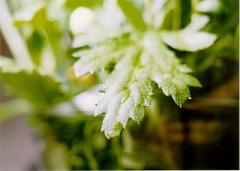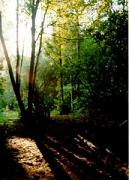
The colors of the lush green leaf are lost in the photograph. The leaf now looks pale whitish and the contours of its shape and width are not clearly visible.

|
The adjoining image is an example of over exposed picture. Look how the image
appears flat and how the colors appear faded.
The colors of the lush green leaf are lost in the photograph. The leaf now looks pale whitish and the contours of its shape and width are not clearly visible. |

|
Less the exposure, the image looks dark, and well...
underexposed!!
The adjoining image is an example of underexposed picture. Here the colors of the ground and most of the tree trunks are lost in darkness. Most of the picture appears dark/black because of underexposure. |
What is exposure and how does it affect the picture quality?: Exposure is nothing but the time for which light falls on the film. Since the only time light enters the camera is when aperture is opened, exposure is closely linked with aperture. If aperture is kept open for a longer period, exposure is more, and vice versa.
The 'right' exposure is determined mostly by the light present when picture is being shot. In the low light situations, more exposure is necessary. In some situations, it may be a necessity to keep the light level low, needing low exposure.
For examples of photographs with long exposures, please refer to the City Lights page.
Back to Photography Basics Back to Photography Back to the Home page